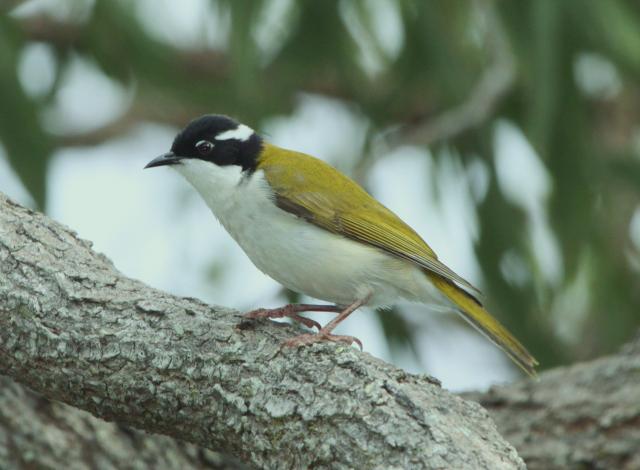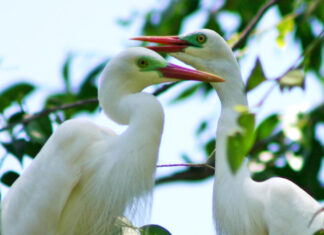Following on from our last column, where we looked at Honeyeaters that are found in our area but are not so well known, this time we will cover other Honeyeaters that may not be recognised.
The White-throated Honeyeater is a common bird here. For most of the year, some will frequent our nearby trees searching through the blossoms for food. They do this very quietly and could be easily missed as they move around. It is a small slim bird as the illustration shows, being about 14cm in length. Its territory covers the country from the coastal regions of far northern Western Australia, across the Northern Territory and down the eastern Queensland coastline to our southern border.
Another of this family around our area though not often recognised is the Mangrove Honeyeater. It has a dark grey coloured back and wings, with yellow edges on the wings and tail. It also has a streak of black through the eye down to its neck with a yellow streak beneath it.
Other markings are greyish with brown flecks underneath and yellow on the chest. Although I have taken photos of one of these near the mangroves on the coast, I was really surprised to see one in our garden in Rockhampton and get its photo also.
The Striped Honeyeater , although listed as being a bird of the drier inland, is certainly found in our region. We had a pair that nested in a tree in our front yard.
Their deep hanging cup shaped nest was about five meters above the ground which meant I had to set up a ladder to take photos of them. This bird is no doubt named because of the black stripes on the back of its head and neck.






